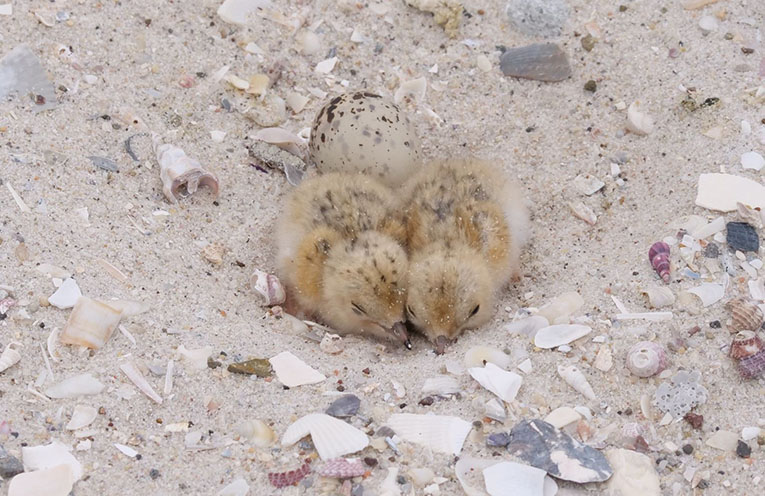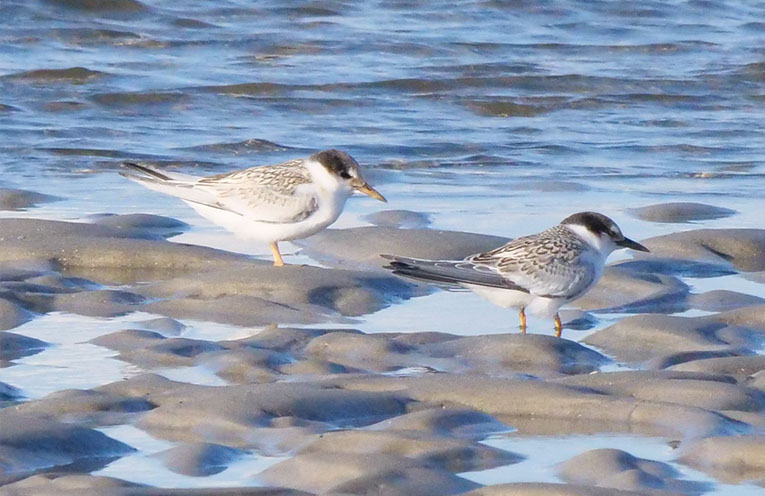
THE Little Tern breeding season is now in full swing with progeny present at every stage from eggs, chicks through to fledged juveniles over three sites on Corrie Island and Winda Woppa beach.
There has been combined effort mainly from NSW Department of Planning, Industry and Environment’s Save our Species(SoS) program, NSW National Parks and Wildlife Service, Mid Coast Council, Hunter Bird Observers Club and Myall Koala and Environment Group to secure, protect and monitor the endangered beach-nesting birds.
The breeding Little Tern chooses the best conditions for nests, and this can change from year to year.
Increasingly all native fauna are finding it hard to reproduce when competing with human activities in the same spaces.
This year there were fewer in the Manning river mouth areas and more in Port Stephens, especially on our north side.
Some Little Tern ignored our plea to resist nesting on the dredge-spoil mound, so fencing and signage was put in place at the eleventh hour, once a nest had been run over by a wayward 4wd!
The overwhelming positive response, aside from one instance of sign and fence vandalism, from the beach-going public and their pets has been most heartening. So many people are reading and adhering to the in situ signs and brochures around Hawks Nest and generally taking an interest in the progress of bird activities at this important time of year.
Pied Oystercatchers are also endangered shorebirds and the natural conditions in Port Stephens result in this area being an important feeding and breeding ground for a significant percentage of the world population of this species.
This year one Pied Oystercatcher pair have successfully raised one chick at Winda Woppa, while at least two others have tried on Corrie Island.
The next month will be a crucial time for Little Tern chicks surviving and growing to fledgling stage, as the success of the season is reflected in the total number of flying juveniles.
We thank the public for respecting the areas indicated for nesting, but note that the growing chicks could be anywhere outside the fenced area so please watch where you step and limit your time near the fenced area.
Adults will not come near and feed the chicks while there are humans around!
By Trish BLAIR, Myall Koala & Environment Group
